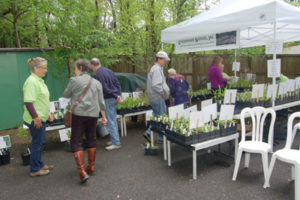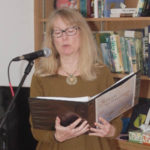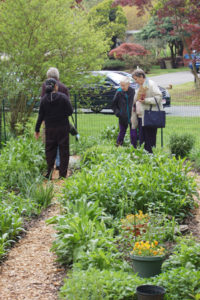Second Look
Report of the Rachel Carson Open House, May 7, 2016 — Part 2
Introduction
The “Second Look” salutes the various participants whose contributions enhanced and supplemented our featured speakers’ presentations through: delightful creative offerings, (crafts, music, poetry), native plant sale and healthy organic refreshments, as described under “A Sense of Significant Variety.” The Second Look includes information from our speakers that was not mentioned in the “First Look.” (Click here to read First Look) Also in the “Conclusions” section, below, there are timely suggestions for what we as individuals can do for birds, including species desperately in need of our help, such as the California condor (see “The View from Rachel’s Window” July 2016).
A Sense of Significant Variety: Those present for the 2016 Rachel Carson Open House came from as far away as California, Illinois, and Wisconsin, and as close-by as the Washington, DC metropolitan area (Virginia, and Maryland). Their ages ranged from 2 to over 80 years old. Some were attracted by the opportunity of buying plants from the good folks of Chesapeake Natives[i]. Some came to be with friends and family. Some came to share important information. Most came to experience all or part of our 3 hour program of talks, music, poetry, and additional 2016 Open House features including:
- the newly established historic corner located in Rachel Carson’s study,
- the Intergenerational Nature Craft table (presided over expertly by Jean Newcomb),
- the recently launched pollinator garden,
- the healthy organic refreshments from Green Plate Catering[ii],
- the delicious carrot cake donated by Restaurant Nora[iii],
- the chance to win a door prize.
Unexpected Avian Guests: Two surprise guests from South America — a Rose breasted grosbeak pair stopped by during the event to sample the seed mix in our hanging feeder, visible from the dining room window, before resuming their northward migration. They seemed at ease in the midst of our resident birds and the people around them, adding a special sense of wonder to this extraordinary occasion.
Music by Bob Zentz: The scheduled program began and concluded with music by Bob Zentz — performing some of his own compositions including the haunting sea-chanty, “Last Skipjack on the Chesapeake Bay” as well as “This Old Bay” and “Horizons.” The songs were accompanied on a variety of instruments displaying Bob’s versatility as a musician.
Readings by Meredith Hadaway: Award winning poet and teacher of ecopoetry, Meredith Hadaway read a selection of mostly her own poems, including “Heron and Harp.” This provided a delightful, lyrical change of pace between more intense presentations. Her lovely, expressive speaking voice was a treat to the ears and the mind.
Our Thanks Go to Those Special People Who Helped at the Open House Event:[iv]
Speakers
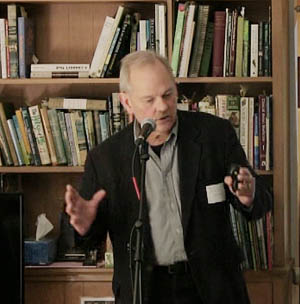 Bill Berry: With a focus on environmental history and use of primary sources, Stevens Point, Wisconsin resident Bill Berry the author of Banning DDT, How Citizen Activists in Wisconsin Led the Way, (2014) gave a riveting Open House presentation about how ordinary people in 1960s Wisconsin, acting with courage, concern and dedication brought about a major societal change (the banning of DDT in their state) for the benefit of birds, other wildlife, and human health. The remarkable ways in which these citizen activists succeeded in achieving the 1969 DDT ban in Wisconsin are still relevant today. Serving as role models, Lorrie Otto and Professor Joseph Hickey (see Addendum for details) made observations, asked questions of government agencies and when they were not satisfied with responses from officialdom, began personally pursuing the answers. Through their stories, as well as those of other activists such as Charles Wurster, a co-founder of the Environmental Defense Fund, Bill Berry’s excellent book, Banning DDT, provides historical perspective to the modern environmental movement. He voices the hope that actions of these Wisconsin citizens can inspire us to continue the kind of environmental vigilance that they (and Rachel Carson) practiced.
Bill Berry: With a focus on environmental history and use of primary sources, Stevens Point, Wisconsin resident Bill Berry the author of Banning DDT, How Citizen Activists in Wisconsin Led the Way, (2014) gave a riveting Open House presentation about how ordinary people in 1960s Wisconsin, acting with courage, concern and dedication brought about a major societal change (the banning of DDT in their state) for the benefit of birds, other wildlife, and human health. The remarkable ways in which these citizen activists succeeded in achieving the 1969 DDT ban in Wisconsin are still relevant today. Serving as role models, Lorrie Otto and Professor Joseph Hickey (see Addendum for details) made observations, asked questions of government agencies and when they were not satisfied with responses from officialdom, began personally pursuing the answers. Through their stories, as well as those of other activists such as Charles Wurster, a co-founder of the Environmental Defense Fund, Bill Berry’s excellent book, Banning DDT, provides historical perspective to the modern environmental movement. He voices the hope that actions of these Wisconsin citizens can inspire us to continue the kind of environmental vigilance that they (and Rachel Carson) practiced.
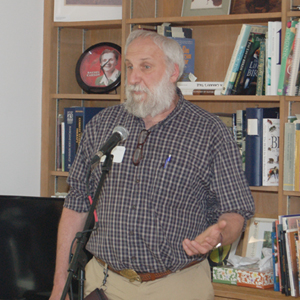 Dr. Stuart Porter: Dr. Stuart Porter provides specific recommendations that help us avoid many human related problems for birds and other wildlife. Dr. Porter considers birds to be among the most sensitive wild populations on our planet. Changes in bird behavior and/or numbers can alert us to the need for corrective action in response to situations, before they develop an adverse effect on a broad environmental scale. His information is especially important because it is rarely made publically available through newspapers or other media news sources. Dr. Porter, represents veterinarians, toxicologists and rehabilitators who care for sick birds. He recommends the following to help protect wild birds:
Dr. Stuart Porter: Dr. Stuart Porter provides specific recommendations that help us avoid many human related problems for birds and other wildlife. Dr. Porter considers birds to be among the most sensitive wild populations on our planet. Changes in bird behavior and/or numbers can alert us to the need for corrective action in response to situations, before they develop an adverse effect on a broad environmental scale. His information is especially important because it is rarely made publically available through newspapers or other media news sources. Dr. Porter, represents veterinarians, toxicologists and rehabilitators who care for sick birds. He recommends the following to help protect wild birds:
Dr. Stuart Porter’s List of Things Ordinary People Can Do to Support Wild Bird Populations
- Return baby birds to their nests.
- Avoid using pesticides (herbicides, insecticides, fungicides) outdoors
- Avoid using rodenticides outdoors.
- Keep cats indoors — or in outdoor enclosures.
- Do not support feral cat populations on your property.
- Stay aware so that political leaders and developers minimize or avoid destruction of valuable bird habitat.
- Support NGOs which promote environmental and wildlife protection.
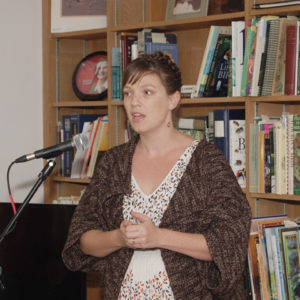 Dr. Rhiannon Crain: From Dr. Rhiannon Crain, an associate at Cornell Lab of Ornithology, we learn that bird lovers across the country are becoming increasingly involved in creating sustainable habitats for wild birds in their own yards. These supply bird populations with the resources required to raise healthy young, and to give them safe nesting areas that are free of toxic chemicals. Thriving avian populations are better able to provide pest control and other ecosystem services[v] that benefit all of us (birds, wildlife, and human society).
Dr. Rhiannon Crain: From Dr. Rhiannon Crain, an associate at Cornell Lab of Ornithology, we learn that bird lovers across the country are becoming increasingly involved in creating sustainable habitats for wild birds in their own yards. These supply bird populations with the resources required to raise healthy young, and to give them safe nesting areas that are free of toxic chemicals. Thriving avian populations are better able to provide pest control and other ecosystem services[v] that benefit all of us (birds, wildlife, and human society).
In planning our habitat improvements, Dr. Crain asks us to think like the birds that we are trying to help, that is, as they seek safe places to build a nest (such as dense shrubs, dead trees, or bird houses); look for the insect food sources that newly hatched nestlings require (baby birds need bugs and plenty of them); and also for refuge areas such as hedges, in which to rest safely and avoid predators. She points out that a suitable bird habitat has 3 vegetation levels (ground level plants, shrubs, and tree canopies); and emphasizes that by growing native plants we can provide additional insect food sources for birds. In addition she recommends that while we may consider dead trees on our properties as objects requiring removal, they can be nature’s apartments for tree-cavity nesting birds (like bluebirds and woodpeckers).
An important aspect of the project she directs, YardMap (Habitat Network), located at the Cornell Lab of Ornithology is that participants are not acting alone but as a nationwide, coordinated community of like-minded folks helping each other by sharing information and experiences, thereby – giving their individual actions greater impact. She encourages us to be observant in looking around for birds, even in urban settings. Readers can access Habitat Network at http://content.yardmap.org/
Addendum
In his presentation taken from his book, Banning DDT: How Citizen Activists in Wisconsin Led the Way, Bill Berry described two activists, Lorrie Otto (gardener/bird lover) and Joe Hickey (college professor/Peregrine falcon lover). Their combined efforts in conjunction with many others and the then newly-established NGO, the “Environmental Defense Fund” contributed to and supported the upsurge of green citizen action that arose following on the heels of Silent Spring. Their legacy to us is vigilance and persistance.
Here briefly are their stories:
Lorrie Otto: When Milwaukee-area house wife Lorrie Otto found dead robins on her lawn and garden after the trees in her neighborhood were sprayed with DDT for elm bark beetles, she gathered them up and took them to the local government official in charge of protecting the environment, with a question, “What are you going to do about this?” His response was, “What do you want, Mrs. Otto, birds or trees?” (DDT killed a number of birds, but it did not save the elm trees from the disease.) Undeterred by this ecologically inappropriate response, Lorrie Otto went on to work with other concerned citizens to serve tirelessly as a core member of the group that prepared the successful case against DDT in Wisconsin. Later she participated in other important environmental actions, winning awards for her work.
Joseph Hickey: As a teen, Joe Hickey had been interested in Peregrine falcons. In 1942, he published a list of Peregrine falcon nest locatios (275 in all) across eastern America. Two decades later, as indications of the Peregrine population decline surfaced, Hickey, then a Professor of Biology, arranged for a resurvey of the Peregrine population sites at a time when they normally had young in the nests. The 1964 survey found that in “133 known nesting sites, some that had been occupied for a hundred years” there was not a single bird. This galvanized Hickey into action. He contacted colleagues in the US and abroad for explanations of this alarming discovery. British ornithologist, Derek Ratcliffe helped answer the question in 1967, telling Hickey that in Britain, DDT had been found responsible for eggshell thinning that resulted in egg breakage, and consequently the failure of falcons and other species to reproduce. Professor Hickey then assigned his graduate student to measure eggshells collected before and after DDT’s introduction in the US marketplace. The research showed significant evidence of thinning after DDT’s introduction. In fact for both Britain and the US, beginning in the year 1947 [when widespread use of DDT as a commercial pesticide began], eggshells were found to be thinner than those of earlier years (before DDT). At Patuxent Wildlife Research Laboratory, in the US, Louise Stickel linked DDT to egg breakage and unhealthy mallard ducklings. She found that DDE, a chemical that resulted from the breakdown of DDT actually caused the eggshell thinning effect.
Conclusions
 There is much we can do to help birds. Actions great and small can make a difference. We can adopt Dr. Porter’s suggestions for supporting wild bird populations — especially avoiding pesticide use (his list is found above). Recording annual events in a nature journal is another way to remain vigilant about changes taking place over time in wildlife populations in our neighborhoods.
There is much we can do to help birds. Actions great and small can make a difference. We can adopt Dr. Porter’s suggestions for supporting wild bird populations — especially avoiding pesticide use (his list is found above). Recording annual events in a nature journal is another way to remain vigilant about changes taking place over time in wildlife populations in our neighborhoods.
It is important that we involve children in the excitement and fun of recognizing and helping birds all around us. Children can enjoy going on bird walks with adults, and learning to identify birds by their features and their songs.
Thinking like a bird can help homeowners to create appropriate habitat and food sources such as providing them with natural sources of seeds, berries and insects. Providing birds with access to food, water, space to hide from predators, and appropriate nest sites are essentials for the survival of wild birds. In planting for birds keep in mind that a suitable bird habitat has 3 vegetation levels (ground level, shrub level, tree canopy level). By growing native plants that are not treated with chemical pesticides we can provide a diverse habitat for birds. Even in a city this kind of effort can attract birds and at times lead to observations of rare birds. For tips on great wildlife landscaping ideas to make such areas aesthetically pleasing to neighbors as well, bird lovers can go to Habitat Network at http://content.yardmap.org/
Becoming involved in birding can mean staying alert for any reports of losses to wildlife populations, not only in birds but other sensitive species (such as fish, amphibians and bees), and trying to track down results of investigations as to the cause(s) of such unfortunate events. These events can have far-reaching consequences.
At another level we can endeavor to seek truth for ourselves in the face of controversy. This may mean asking questions of scientists, administrators, and others designated to protect the earth whether in government, academia or NGOs. It can mean, as well, sharing science-based ideas with community members (in a non-adversarial way), to encourage individuals to take effective environmental actions.
Finally, based on what we have learned through our own observations and research from scientific sources, by questioning experts, from exchanging information with neighbors and other social contacts including environmental action groups, we can bring our concerns to policy makers, community leaders and those in a position to help correct the problems.
Our reward for introducing children to nature as a joyous, delightful experience, is helping them to become adults who not only will share our love of birds and wild creatures but also will become committed to protecting them.
Our reward for creating sustainable habitats for birds, for having vigilance and translating it into action as indicated above is knowing that we have helped to protect those species unable to speak up for themselves (wild birds, wild bees, forests and all of nature). Also it is knowing that we have acted in the tradition of Carson, Otto, Hickey and innumerable others.
…………………………………..
PREPARED BY: Diana Post and Munro Meyersburg – July 14, 2016
[i] Chesapeake Natives, Inc.: In their spacious location on the historic Mt. Airy Mansion grounds, the folks at Chesapeake Natives work to preserve the native plant heritage of the Chesapeake Bay Watershed through education, research and propagation of plants native to the Bay watershed, without the use of chemical pesticides. Contact: www.chesapeakenatives.org
[ii] Green Plate Catering: is a local Wheaton, MD firm with an extensive food selection that includes vegetarian, vegan, and gluten–free menus. Contact Information: www.greenplatecatering.com, kit@greenplatecatering.com, Phone: 301-949-7601.
[iii] Restaurant Nora is America’s First Certified Organic Restaurant. It is at 2132 Florida Ave, NW, Washington DC. 20008. Contact Information: www.noras.com, Phone: 202-462-5143
[iv] Many thanks for your wonderful help, dear friends:
Anne, Bobby, Donna, Gloria, Heyfa, Jay, Mike, Ross
[v] An Account of Ecosystem Services Performed by Birds
A watershed report, “The Millennium Ecosystem Assessment” (2005) verified nature’s services as providing the supporting, provisioning, regulating, and cultural roles needed for human society’s well-being and warned that 60% of ecosystem services were being degraded. In an example from the mid-1950s leaders lacking in ecological awareness brought about a costly miscalculation but in correcting their mistake learned to appreciate the services of certain small birds.
Here is how it happened: A Costly Misadventure for Birds and People.
In the 1950s Chinese officials, alarmed about alleged losses of grain due to sparrows, declared them to be one of the country’s major scourges (in company with rats mosquitoes and house flies). Millions of Chinese targeted for killing almost any small perching bird. During three days “in Beijing in 1958, near-hysterical crowds are reported to have killed eight hundred thousand birds.” “The consequence, of course, was major outbreaks of insect pests. The misjudgment was acknowledged, the sparrow was officially removed from the list of scourges and the killing of insect-eating birds was subsequently banned.” (Baskin, Y., The Work of Nature: How the Diversity of Life Sustains Us, 1998)

